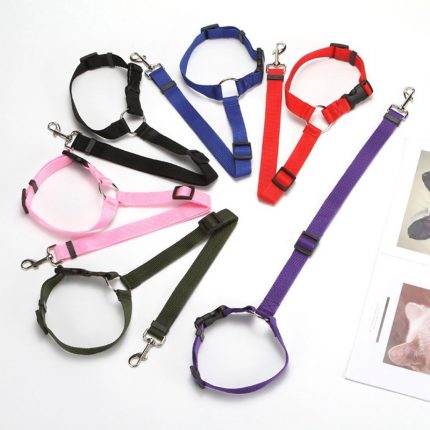Why Do Dogs Knead: Exploring the Fascinating Behavior of Canine Kneading
Dogs are undeniably fascinating creatures, with their playful antics, unwavering loyalty, and endearing habits. One such behavior that often leaves dog owners puzzled yet captivated is their tendency to knead. If you’ve ever observed your furry companion rhythmically pushing their paws against a soft surface, you may have wondered why they engage in this peculiar behavior. In this article, we will delve into the intriguing world of canine kneading, exploring the possible reasons behind this unique action.
Kneading, also known as “making biscuits” or “milk treading,” is a behavior commonly associated with cats. However, many dog owners have witnessed their canine friends engaging in this kneading motion as well. It typically involves the dog rhythmically pushing their front paws into a soft object, such as a blanket, pillow, or even their owner’s lap. This behavior is often accompanied by a contented expression, gentle purring, and a sense of relaxation.
One theory suggests that dogs knead as an instinctual behavior inherited from their wild ancestors. In the wild, canines would create a comfortable nesting spot by patting down grass or leaves with their paws. This action helped to flatten the surface and remove any potential threats or discomfort. Therefore, it is believed that domesticated dogs may retain this instinct to knead as a way to create a cozy and secure resting place.

Another possible explanation for kneading behavior in dogs is linked to their early development. Puppies instinctively knead their mother’s abdomen to stimulate milk production during nursing. This action helps them to obtain nourishment and establish a strong bond with their mother. As dogs grow older, this behavior may be retained as a comforting and soothing ritual, reminiscent of their early days of dependency.
Furthermore, kneading may serve as a form of self-soothing for dogs. Similar to how humans engage in activities like knitting or squeezing stress balls to relax, dogs may find comfort in the repetitive motion of kneading. The rhythmic pressure applied to their paws may release endorphins, providing a sense of calmness and contentment.
While the exact reasons behind why dogs knead may vary from one individual to another, it is clear that this behavior holds a significant meaning for our canine companions. Understanding and appreciating this unique behavior can deepen our bond with them and enhance our ability to meet their emotional needs.
In the following sections of this article, we will further explore the main theories and delve into the practical recommendations for dog owners. By gaining insights into why dogs knead and learning how to respond appropriately, we can ensure our furry friends feel loved, secure, and well-cared for. So, let’s embark on this fascinating journey of unraveling the mysteries behind why dogs knead!
The Fascinating Reasons Behind Why Dogs Knead
The Instinctual Behavior of Wild Ancestors
One of the main reasons why dogs knead can be traced back to their wild ancestors. In the wild, canines would create a comfortable nesting spot by patting down grass or leaves with their paws. This instinctual behavior helped them flatten the surface and remove any potential threats or discomfort. Even though domesticated dogs have a cozy bed to rest on, this ancestral behavior may still linger within them. Kneading provides them with a sense of security and familiarity, as if they are preparing their own sleeping area.
The Connection to Early Development
Another significant reason why dogs knead is linked to their early development as puppies. When nursing, puppies instinctively knead their mother’s abdomen to stimulate milk production. This action serves a vital purpose in ensuring they receive nourishment and establishes a strong bond with their mother. As dogs grow older, this behavior may be retained as a comforting and soothing ritual, reminiscent of their early days of dependency. Kneading may evoke feelings of safety and contentment, reminding them of the warmth and security they felt when nursing.
A Form of Self-Soothing
Kneading can also serve as a form of self-soothing for dogs. Similar to how humans engage in activities like knitting or squeezing stress balls to relax, dogs may find comfort in the repetitive motion of kneading. The rhythmic pressure applied to their paws may release endorphins, providing a sense of calmness and contentment. This behavior can be particularly common in dogs that experience anxiety or stress. By kneading, they are able to self-regulate their emotions and find solace in the familiar action.
Expression of Happiness and Contentment
In addition to the instinctual and developmental reasons, dogs may also knead as an expression of happiness and contentment. When dogs are in a relaxed and comfortable state, they often exhibit kneading behavior. It is their way of showing their contentment and satisfaction with their surroundings. This can be observed when they knead on a soft blanket, pillow, or even their owner’s lap. It is a way for them to mark their territory and create a sense of ownership and belonging.
Conclusions
In conclusion, understanding why dogs knead is an intriguing aspect of their behavior that offers insights into their comfort, bonding, and instinctive actions. For more in-depth information on this topic, you can visit geepets.com, where a variety of dog behaviors, including kneading, are explored to give pet owners a better understanding of their furry friends.
Additionally, for further reading on dog behaviors and their meanings, the American Kennel Club (akc.org) provides a wealth of resources that can help deepen your knowledge about the ways dogs communicate through their actions. Both of these resources can be invaluable for anyone looking to learn more about the fascinating world of dog behavior.

Practical Recommendations for Responding to Dog Kneading
Provide Soft and Comfortable Surfaces
To cater to your dog’s kneading behavior, it’s beneficial to dive into understanding why do dogs knead. By providing them with access to soft and comfortable surfaces, such as cozy blankets, pillows, or even designated dog beds with plush materials, you are acknowledging the roots of understanding why do dogs knead. Offering these options not only serves as appropriate outlets for their kneading instincts, which is a crucial part of understanding why do dogs knead, but also helps create a relaxing environment where they can feel secure and content.
This understanding why do dogs knead and responding to it by ensuring they have such comforting items around, you’re addressing their instinctual needs. This approach underscores the importance of understanding why do dogs knead, as it allows you to better cater to their behavioral patterns, ensuring they’re happy and comfortable in their environment.
Observe and Understand Your Dog’s Triggers
Take the time to observe your dog’s kneading behavior and try to identify any triggers or patterns. Understanding why do dogs knead is crucial in this context. Some dogs may knead more when they are feeling anxious or stressed, while others may do it purely out of habit or comfort. By understanding their triggers, you are essentially delving deeper into understanding why do dogs knead. This insight allows you to provide them with the necessary support and address any underlying issues that may be causing their need to knead excessively.
Indeed, understanding why do dogs knead not only enhances your awareness of your pet’s emotional and physical needs but also strengthens the bond between you and your dog. By acknowledging and addressing the reasons behind their kneading, you’re taking significant steps towards ensuring their well-being, highlighting the importance of understanding why do dogs knead in fostering a nurturing and responsive care environment.
Redirect Destructive Kneading Behavior
In some cases, dogs may exhibit destructive kneading behavior, such as scratching furniture or carpets. Understanding why do dogs knead is crucial in addressing this issue effectively. If this occurs, it is important to redirect their behavior to more appropriate outlets. Provide them with designated scratching posts or boards to fulfill their kneading needs without causing damage to your home. Encourage and reward them when they engage with these alternatives, reinforcing positive behavior.
Understanding why do dogs knead can help you identify the underlying reasons for this behavior, whether it’s seeking comfort, marking territory, or simply a natural instinct. By acknowledging and addressing the root cause, and consistently reinforcing the use of appropriate alternatives, you can help mitigate this behavior. Understanding why do dogs knead is a key step in creating a harmonious living environment for both you and your pet, ensuring their natural behaviors are expressed in safe and non-destructive ways.
Engage in Bonding Activities
Understanding why dogs knead is essential in appreciating the bonding experiences between you and your dog. When setting aside dedicated time for interactive play sessions, grooming, or gentle massages, you’re not only providing physical stimulation but also creating opportunities for quality bonding. Engaging in these activities can help alleviate any anxiety or stress your dog may be experiencing and offer them alternative ways to relax and feel connected. Understanding why do dogs knead during these moments can enhance these experiences, as it gives insight into their natural behaviors and how they express comfort and affection.
Incorporating the knowledge of understanding why do dogs knead into your routine with your dog reinforces the importance of these bonding activities. It’s a behavior that stems from their puppyhood, indicating contentment and a method to soothe themselves. Thus, when you notice your dog kneading during a massage or while cuddling, recognizing this as a sign of trust and comfort can make the bonding time even more special. Understanding why do dogs knead helps in interpreting your dog’s body language and emotional state, ensuring that the time spent together strengthens your bond and supports their well-being.
Consult with a Veterinarian or Animal Behaviorist
If your dog’s kneading behavior becomes excessive, compulsive, or causes distress, understanding why do dogs knead is crucial in taking the first step towards addressing the issue. It is advisable to seek professional guidance for a deeper understanding why do dogs knead, as this can provide insights into their behavior.

A veterinarian or certified animal behaviorist can assess your dog’s behavior, rule out any underlying medical conditions, and offer a more informed perspective on understanding why do dogs knead. They may provide tailored recommendations to address the issue, incorporating a thorough understanding why do dogs knead into their approach. This could involve behavior modification techniques, training exercises specifically designed with an understanding of why do dogs knead, or even medication if necessary. Understanding why do dogs knead is key to effectively managing this behavior and ensuring the well-being of your pet.
Show Patience and Understanding
Above all, it is crucial to approach your dog’s kneading behavior with patience and understanding. Remember that kneading is a natural behavior for many dogs and serves various purposes. Avoid scolding or punishing your dog for this behavior, as it may cause confusion or anxiety. Instead, provide positive reinforcement and create an environment that supports their emotional needs. By showing empathy and understanding, you can strengthen the bond with your furry friend and ensure their overall well-being.
By implementing these practical recommendations, you can effectively respond to your dog’s kneading behavior and create a harmonious and fulfilling relationship with your canine companion.















